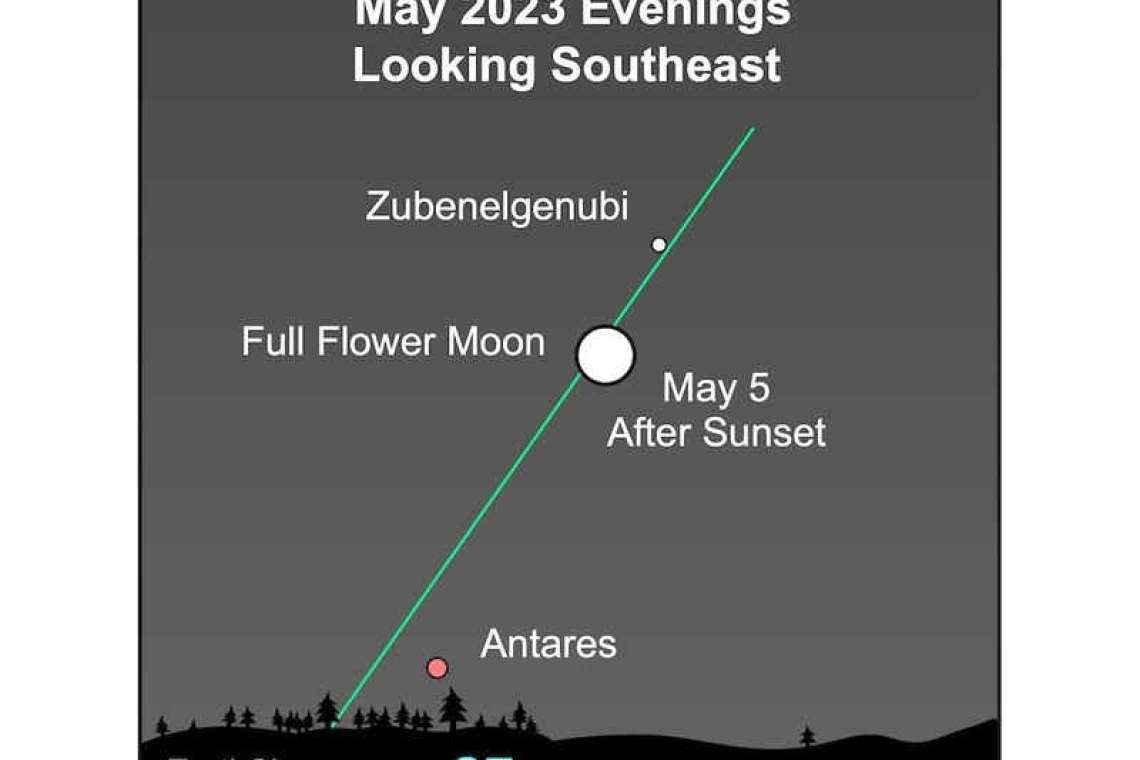~ St. Maarten’s Backyard Astronomy for May 5-7 ~
Sun rises at 5:43am
Sun sets at 6:34pm
Lunar phase: 3rd Quarter, waning from full
Moon sets at 6:13am
Moon rises at 7:54pm
This weekend, the focus is on the full moon, the Flower Full Moon of May. We start Friday with the true full moon and allow it to linger, nearly full, over the rest of the weekend. Everyone loves a full moon, unless, of course, you really want to see stars, or on occasion shooting stars, also known as meteors. Such is the case this weekend, as we may see a few of the Eta Aquariid meteor shower.
The Eta Aquariids are best viewed from the southern hemisphere, but we are far enough south here in the Caribbean that we might enjoy the sky show this weekend, even fighting the light of the nearly full moon. Early morning is your best viewing time, right before sunrise, so set your alarms!
These meteors are from the debris field of the most famous comet of all – Halley’s Comet. We on planet earth pass through this zone of dust and ice specks each year about this time, even though the comet that made them is far away, past the orbit of Pluto, and not set to return to our skies until 2061!
Meanwhile, you might enjoy seeing Orion heading to the western horizon just after sunset followed by Gemini. These constellations are so easy to find, even for starry-eyed novices. Begin by setting up to look west, the direction of the setting sun. Once the sky turns dark, say about 8:00pm, gaze up at the sky just above the land. You’ll no doubt see the Evening Star, Venus, which isn’t really a star, but a brilliantly lit planet.
Just to the left (or south) of Venus, look for three stars in a row. That is the “belt” of Orion, the Hunter, and he is oriented these days on his side, with his feet to the left and his arms reaching out to the right. That three-star belt is your entryway to many other constellations. Both Orion and Venus set very early in the evening hours, so if you are late to your post, you just might miss them. But no worries, though, let’s just look up, above Orion’s position to Gemini, the Twins.
Gemini is noted by two bright stars, appropriately nicknamed the twin stars: Castor and Pollux. These names come from the mythological stories of ancient Greece. This weekend, we continue to see Mars up there by the twin stars, look for a reddish “star” just to the left of Pollux, the uppermost of the twin stars. Good luck with your starry ambitions, and enjoy the universe on display.
Thank you for keeping up with the Night Sky articles, backyard astronomy designed for St. Maarten sky viewing. FYI: If you are out later on in the week, note that each star rises about four minutes earlier each day than written here, and the moon rises 50 minutes later. Night Sky is researched and compiled by Lisa Davis-Burnett. Earthsky.org is a key resource for information and images. Questions or comments? Email This email address is being protected from spambots. You need JavaScript enabled to view it.







